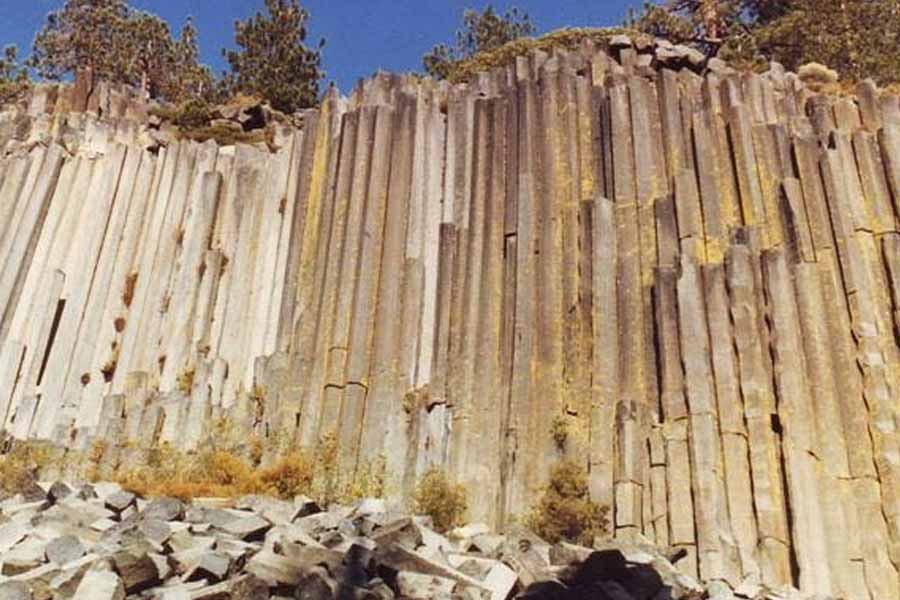You hear “China pyramid” and your mind jumps to lost dynasties and secret chambers. Same. Mine, too. Now picture a high plateau, windbitten and quiet, hiding stranger things than tombs. In Qinghai, rusty cylinders poke from caves and shoreline like bones. I can’t stop thinking about them.
A strange whisper from the plateau
The Baigong pipes sit on the slope of Mount Baigong, facing Lake Toson. Some are thin as a thumb; others reach forty centimeters across. A few disappear into the lake, as if chasing something under the water. They look manufactured, yet nature loves good camouflage. Reports first trickled out in the 90s, mostly shrugged away. Attention spiked in 2002, and the curiosity never left.
Analyses found iron oxide, with silica and calcium pressed into the mix. A small fraction refused neat labels, which always stirs imaginations. Fragments trap bits of plant matter, real organic scraps hardened into place. People stared, argued, and started collecting theories like souvenirs. Some pointed to geology; others waved at legends and late-night radio. The headline kept returning, half whisper, half dare. Could a remote mystery feel bigger than a China pyramid out of storybooks?
What we’re actually looking at
Start with the simplest frame. Roots grow, die, and leave channels inside soil and stone. Mineral-rich water wanders through, deposits iron, and hardens the passage. Diagenesis can sculpt a cylinder that mimics plumbing. It’s not glamorous, yet it explains a lot. Plant matter inside fragments fits the root-casting idea. You can almost see the timeline etched in rust. Floods offer a second path, shaping the rock from within. Ancient waters push sediments into fractures, building iron and calcium skeletons.
Nature loves repetition and patience; machines love speed. These shapes might be nature’s slow engineering with a gritty smile. That said, the chemistry still leaves a few blank squares. Gaps invite questions; questions invite stories. The term China pyramid gets tossed around online as shorthand for “big mystery.” These pipes earn their own name, stubborn and oddly graceful.
China pyramid
Legends arrive right on cue. Locals tell of an alien lab tucked into the mountain. Night skies here are so clean they feel surgical. You can stand by the shore and hear silence working. That’s when wild theories walk in and take a seat. Unknown civilizations, buried tech, secret conduits under the lake. No artifacts back them up, not a shard or tool. No human remains, no inscriptions, just weather and rust.
The site reads like geology wearing a mask. Still, I get why imaginations race. Mystery is lighter than proof and easier to carry. New techniques might pin down ages with tighter margins. Right now, estimates are vague and unsatisfying. The phrase China pyramid shows up again, chasing clicks and wonder. I’d rather listen to the rock before the rumor.
From roots to rust
Let’s talk texture and time. Iron loves oxygen; they dance and leave red scars everywhere. Add silica, add calcium, and you get a tougher shell. Cylinders hold shape the way reeds keep rhythm in wind. They feel engineered because our eyes crave straight lines. Nature can oblige, given a few thousand seasons. Picture a forest that never made headlines. Roots thread the slope, die back, and ghost into cavities.
Mineral water settles in, breathes out, and hardens the void. You end up with a sculpture that pretends to be plumbing. People see intention where there’s only patience. That’s the trick this landscape plays on visitors. We want a blueprint; geology offers a saga. The comparison to a China pyramid isn’t crazy, just sideways. Both lure us with age, shape, and a taste for drama.
What remains unknown
We still lack a timeline you can hang your hat on. Some samples could be very old; others might be younger. Sampling depth, context, and controls matter more than headlines. Published studies are thin, which doesn’t help trust. Fieldwork here isn’t easy, and seasons close fast. Fresh cores, clean labs, and open data would move mountains. Until then, the story lives between science notes and campfire talk. I feel the tug of both, if I’m honest. Mystery keeps us awake; method lets us sleep. Maybe that’s why this place gets under the skin. It reminds us the Earth still writes plots without us.
Strange pipes, spare clues, and a lake that says nothing. Call it an unfinished chapter with rust at the edges. If you need a shorthand, say China pyramid with a grin. Just remember the joke lands softer than the rock beneath your feet. One day, better digs and better tools will trim the noise. Until that day, wonder does the heavy lifting and keeps the door open. And yes, somewhere in Qinghai, the wind still edits the script. It waits, patient as iron, for the next pair of curious boots. When answers come, they’ll feel obvious in hindsight. Right now, the mystery feels honest and strangely human.
